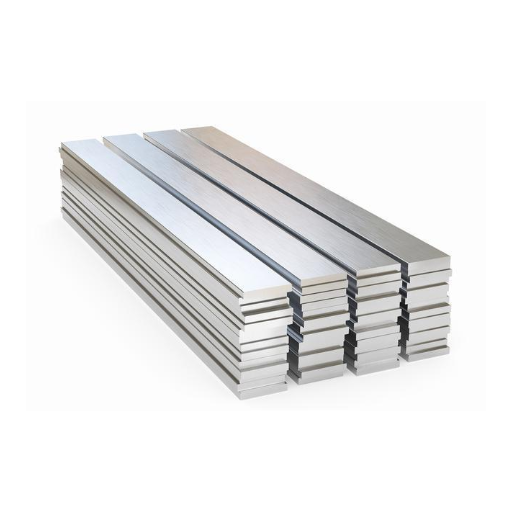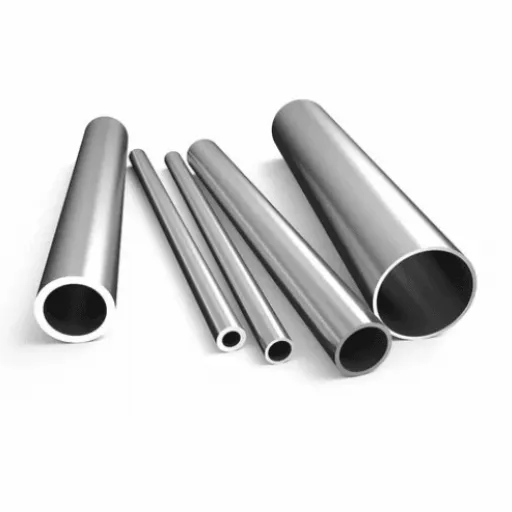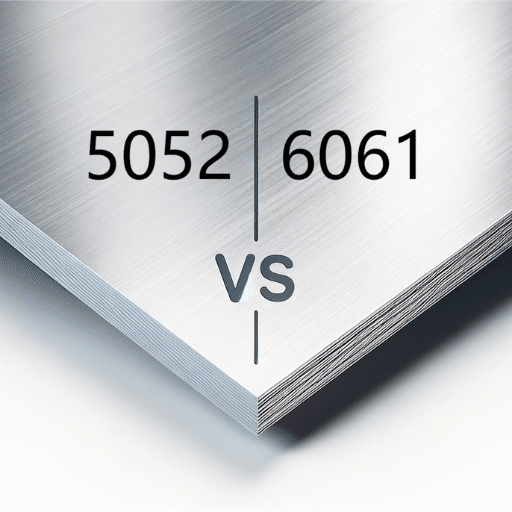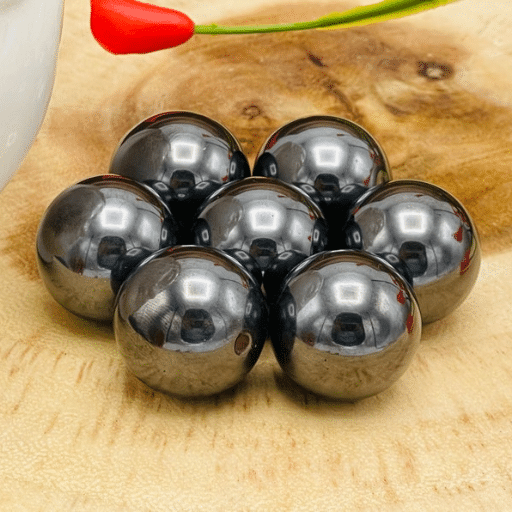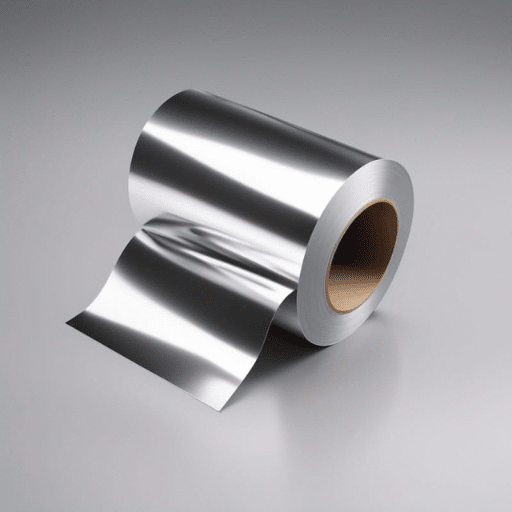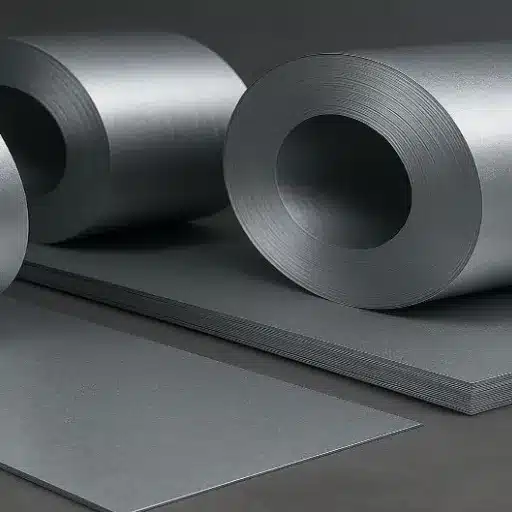When selecting the right type of stainless steel for your project, understanding the differences between various grades is crucial. Among the most commonly used options are 18-8 stainless steel and 316 stainless steel—two materials that may appear similar but differ significantly in composition, properties, and applications. Choosing the wrong grade could lead to inefficiencies, added costs, or reduced performance in demanding environments. This article provides a detailed, side-by-side comparison of these two steel grades, offering you the technical insights needed to make an informed decision. Whether you’re designing for corrosion resistance, durability, or high-temperature functionality, this guide will help you determine which material is best suited for your needs.
Physical Properties of 18-8 vs 316
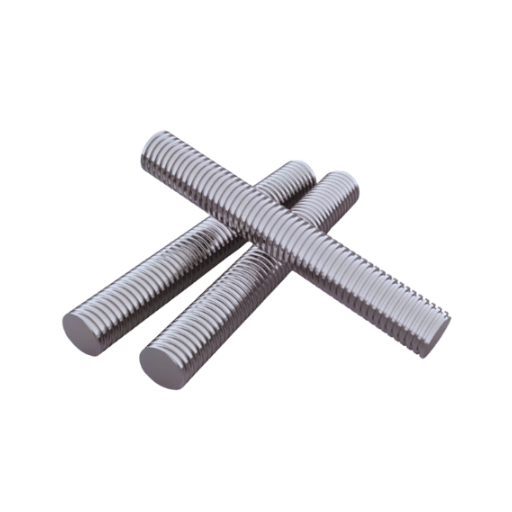
Tensile Strength and Hardness
The tensile strength and hardness of 18-8 and 316 stainless steel differ primarily due to their chemical composition and intended applications. For 18-8 stainless steel, which includes commonly used alloys like 304, the typical tensile strength ranges from 70,000 to 100,000 psi. The hardness of this grade of stainless steel typically ranges from 80 to 92 HRB. These strengths are enough for kitchen cutlery, automobile metal work, and building accessories, for instance, where the 18-8 grade may be used due to its increased strength and wear resistance.
Comparing these two grades of stainless steel, the 316 grade has slightly higher strength performance. The tensile strength of type 316 normally lies in the range of 75,000 – 105,000, depending on the precise process adopted in its manufacture. The hardness of 316 also increases slightly and ranges from 85-95 HRB, thus making it harder than 304. The addition of molybdenum into the alloy 316 helps improve its load-bearing capacity due to stress and corrosiveness, which means grade 316 is capable of surviving under seawater conditions, some corrosive solutions, and also as physical implants used in surgeries. These are structures that need to be excellent render even under the harshest environmental conditions.
In conclusion, both pieces of work have quite acceptable tensile and hardness properties, but with regard to some conditions, and especially where there is moisture or heat, material 316 is a better option. Depending on the mechanical and chemical properties of the materials, professionals should decide which grade is most suitable for a given situation.
Thermal Conductivity
Thermal conductivity describes how heat is transferred through a body. This phenomenon is important in practical terms because sometimes there is a need to absorb or release heat effectively, and then appropriate materials need to be chosen for that purpose. The particular thermal conductivity of stainless steel is grade-dependent, and the difference in layout inside those steels affects for it can be use.
For the grade 304 steel, conductivity varies depending on the grade as well as the other types of grades present in the steel. All these factors, therefore, contribute to the assemblage of grade 304 steel. The grade 304 stainless steel is such as an adequate thermal conductor. The general value of thermal conduction is more or less 16.2 W/m·K at room temperature. Correspondingly speaking, it is an efficient grade of steel for most general engineering applications, but owing to a high thermal conductivity, it is not considered the best for other areas such as heat exchangers and electronic cooling systems.
Grade 316 stainless steel, though many things are similar to 304, has moderate thermal conduction, and it is usually found at around 15 W/m·K. Slight differences exist, and in some applications where the environment is highly thermalized, this can lead to certain equipment inefficiency. The slightly lower thermal conduction of 316 as compared to 304 is compensated with excellent corrosion resistance, enhancing the ability of the material for heat transfer in such harsh applications like marine or other chemical processes.
The estimation of the thermal conductivity in practice demands not only the material properties but also the conditions of usage in real systems, as they influence the overall efficiency of the heat transfer process.
Density and Weight Differences
When picking materials suitable for any type of industrial or structural applications, focus tends to shift to density and mass, where density of a material is defined as a material’s mass per unit volume, such as grams per cubic centimeter (g/cm³) or kilograms per cubic meter (kg/m³). In the case of various grades of stainless steel, such as 304 and 316, the density is approximately 8.0 g/cm³. This is a uniform figure across a large number of the austenitic stainless steel grades, but variations can occur on account of the different additives in the steel alloy.
On the other hand, the mass of a material is a product of its density and the space it occupies in the vicinity. This is why such rigid material as their stainless steel will tend to have more elastic and energy-absorbing qualities, or resistance to external loads or conditions in their design, production, and use. In particular, grade 304 and 316 stainless steels offer about the same density corresponding to either 303 or 304, and contain added molybdenum, which further increases their resistance to such attacks. However, the presence of this additional element does not cause any compositional shift of the metal, which enables continued better performance of the metal in strength and resilient applications.
Shenzhen Schools—When making decisions based on density and weight, there needs to be a consideration for operational matters in the light of load-carrying capability, overall weight of the whole system, and environmental constraints. For instance, for both 304 and 316 in the marine sector increases the mass contributes to overall robustness. However, type 316 is usually opted for due to more protection of the material from corrosion in saline water, despite it being slightly more expensive.
Corrosion Resistance Analysis
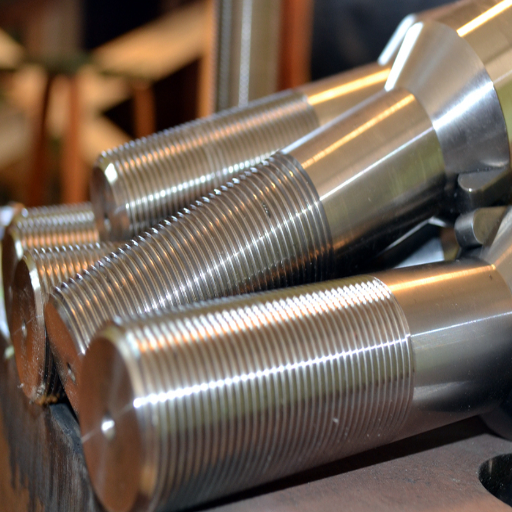
Corrosion Resistance of 18-8 Stainless Steel
Having a composition of 18% chromium and 8% nickel stainless steel, also known as 18-8 stainless steel, has outstanding anticorrosive properties over a wide range of environments; this type is widely used in baking activities. At the same time, it is resistant to the action of the atmospheric medium being covered with the oxide film, which passivates the surface and enables the metal to resist any further oxidation as well as chemical attacks. Such properties make it useful in major challenges such as pitting and crevice corrosion in mild environments. Water or any other form of 18-8 stainless steel is even more stable in such conditions.
The problem will intensify even more when it corrodes. Metal corrosion in the form of rusting is not a big problem for ambient conditions, even in the presence of humidity and air pollution. But once the aggressive media, such as acids, chloride ions, and water, are included in the environment, there will be a difference in the performance, and also allowing other factoring items such as temperature, concentration of the corrosive agents, and the time of exposure. This is not the problem, however, and they usually stand up to adverse conditions. The service life of the pumps may be limited due to chloride exposure unless maintenance work is frequently performed, for example, in seawater or de-icing salts.
The resistance to alteration in the alloy has been improved through the implementation of changes in processing. For example, the use of mechanical surface treatments like electropolishing, already existing but not widely used, can be considered an improvement. It is worth taking into account the fact that some of the grades behave positively neutral, whereas some fail when used in battering extreme pH situations. The use of coatings or even different materials like austenitic stainless steel type 316 can prevent such damage in extreme applications. For instance, let’s take a look at the behavior of AS-SS 204 Cu after polishing with the 20 µm diamond.
18-8 steel presents both microstructure and chemical composition characteristics, which allow its utilization for both indoor and outdoor purposes, ranging from building and ending with food industry facilities. Because it fulfills criteria of strength, durability, and cost-effectiveness, stainless steel types provide an alternative for other materials in high conductivity applications and are well adopted in the industry for such operations.
Corrosion Resistance of 316 Stainless Steel
Austenitic stainless steel grade 316 is said to be one of the most resistant against corrosion, with its medoxro drug oksidu added in quantities of not less than 2% and not more than 3% mainly being responsible for that. Indeed, this added component greatly improves the ability of 316 SS to resist crevice as well as pitting corrosion, specifically in environments high in chlorides such as those found in the sea and along the coast, or the facilities in the chemical industry. When compared with grade 304 stainless steel, if 316 ss is continuously tested against aqueous environments like saltwater, acidic solutions, and other corrosive media, its rise to prominence in such applications is quite inevitable.
One of the strong points of 316 stainless steel regarding performance is its use in environments where temperatures are elevated and range between the high-heat condition and the transitional range. For example, this alloy is usually used in practice in the design of items like heat exchangers, resonance tanks, and pipes in various installations, conceptually emphasizing reproductive resistance as well as the adverse environmental service conditions expected.
Being resistant to damage caused by corrosion under the effect of chlorides, 316 SS has shown effective pitting resistance with target salt cte = 0.2 mol at an even higher level than most of the other grades. Moreover, the protective film made up of the latter type and the former types as enhancers repairs itself quite satisfactorily on exposure to the denaturating mediums, particularly metallic compounds, extending further their living standards in harsh environments.
Performance in Saltwater and Harsh Chemicals
The 316 stainless steel (316 SS) is highly regarded when subjected to seawater and aggressive chemical conditions. This adds the molybdenum aspect in the steel content as a major addition to those characteristics, and particularly to the presence of chloride ions. The benefit of 316 SS in such media is that it does not show severe wear. Even when exposed to threats like seawater and dangerous industrial chemicals, the material can safely operate because the 316 SS possesses the capability to maintain an oxide film that mends itself with time. This layer of inactivity manufactured during processing serves to decrease the levels of corrosion that would have been stripped by mechanical rubbing off over time.
Moreover, it should be noted that 316 SS does not undergo any change in its inherent physical properties because such chemical environments demand so. This is not the case with most of the other stainless steel grades, which have a very low level of tolerance for corrosive environments, as these metals are subjected to avoid stress corrosion cracking, which is one of the most important reasons for the loss of materials in highly corrosive salty or chemically aggressive environments. It is just as important that the material does what it is supposed to do as bonuses. This particular material also excels in terms of performance against sulfuric acids, alkaline chlorides, and chemicals, which are the other applications in the compound, marine, chemical processing, and desalination industries.
Such is my understanding, and it is clear that I have not been disappointed. There is no question that when the environment includes high salinities and chemicals, 316 SS performs reasonably well. This metal is beneficial, and in certain applications, there are no advantages to substitute it for instance, other materials and alloys because of its capability to provide effective protection against corrosion, together with high strains and pressure.
Durability and Performance Characteristics
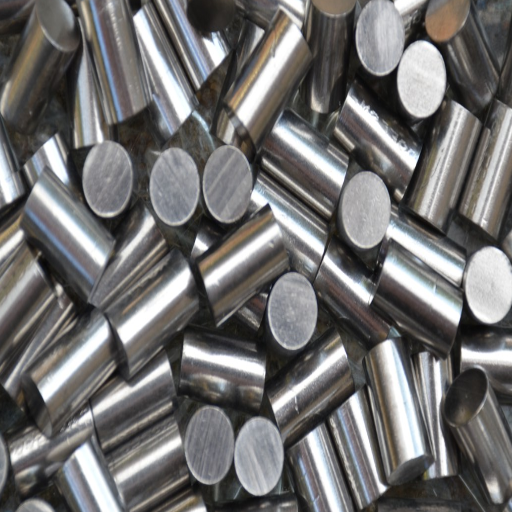
Long-Term Performance in Various Environments
Stainless steel with 316 origin has had high resistance to environmental exposures for different durations and has since been regarded as a high-performing material even under harsh conditions. Its pitting and crevice corrosion resistance levels significantly increased, especially in corrosive environments such as the sea and wherever Titanium is used because it contains Chloride. Moreover, its robustness against Pitting and Crevice Corrosion in Saline Solutions cannot be undervalued, hence becoming the most sought-after material for shipbuilding and Coastal Infrastructure. Besides, the structure retains its strength and resistance to corrosion in oxidizing and weakly reducing chemo-acidic media, demonstrating adaptability for industrial process systems.
The performance of the material over extended periods is confirmed by experimental evidence. Further, 316 stainless steel was tested even at elevated temperatures in stagnant seawater for 15 years and still showed virtually no weight loss relative to its full tensile and elongation performance. Similarly, in hazardous industrial waste storage, it can resist aggressive solvents like sulfuric, hydrochloric, and phosphoric acids, which are used, showing its longevity. This robustness minimizes the need for maintenance and provides durability to the essential equipment, thereby supporting cost-effective and reliable performance of major systems.
There are other reports that indicate that the intergranular corrosion of the alloy increases with higher environmental temperatures, especially when not tempered. Thanks to this, steel is the most suitable material for heat exchangers and high temperature substances like boilers, as well as several other applications where high resistance to thermal conditions is required. Thus, 316 stainless steel has cemented its place as an inevitable element in projects where the importance of dependability and service life is heightened.
Impact Resistance and Fatigue Strength
316 stainless steel is appreciated as one such material that has exceptionally high impact strength that it can withstand the shock of a so-called instantaneous load (or even mechanical shock) without experiencing significant plastic deformation or failure. This kind of strength becomes important in working conditions where maintaining load-bearing capacity under randomly distributed loads is of prime importance. Also, since the steel is mostly austenitic, it is less likely to crack; therefore, it provides excellent toughness even at very low temperatures such as those found in cryogenic applications.
Its endurance limit, also known as fatigue strength, is the most important factor in the assessment of a material’s ability to resist loads that are repetitive without failure due to fatigue. Besides, the simulations and tests proved that the 316 stainless steel exhibits very good resistance to fatigue as compared to other grades under dynamic or cyclic application of stress. For instance, such materials are well-adapted to high steady alternating load application in consisting of rotating machinery or turbine installations on works: they will be subjected to the action of variable load and fatigue.
In addition, the alloy’s impact and fatigue resistance properties have also been improved by the advances in Metallurgical treatments, which have helped in overcoming some of the previous limitations, making 316 stainless steel more suitable for the recently evolving engineering applications. Literally, from sea foundations to air crafts and space crafts, this engineered material possesses capabilities to survive and perform under both ballistic and cyclic load conditions, which signifies its indispensable value in core business sectors as well.
Maintenance and Longevity Considerations
It is important to consistently care for the components produced with 316L stainless steel so as to enjoy their utility for a long time, no matter the operational conditions. Cleaning as a preventive measure from chlorides is especially important in marine and other acridity conditions where there are signs of localized pitting corrosion after incubation. The equipment used for cleaning ought not to be harsh on the stainless steel structures, and they should only use neutral solutions with a pH of 7 to avoid damaging the chromium layer, which gives the steel its corrosion resistance.
Component degradation will similarly necessitate that these routine maintenance inspections be done accordingly to those that are subjected to severe conditions, such as high stresses as well as high temperature cycles. Such inspections can detect damage at an early stage before it grows into a more complex type of damage, such as stress corrosion cracking or fatigue failure. For instance, in the aerospace industry, especially during the manufacturing phase of parts, there is usually the application of nondestructive test (NDT) techniques like ultrasonic examination or dye penetrant inspection to ensure the safety of a structure.
In addition to the above measures, functional coatings may provide some gains to improve the serviceability of the materials, particularly where the performance requirements are high. These coatings, often referred to as polymer and ceramic coatings, can offer enhanced corrosion protection concerning certain types of corrosion degradation without changing the physical properties of the base alloy. And over and above that, an appropriate program for the maintenance of 316 stainless steel is adopted in conjunction with the prevailing room conditions and stress tolerance, and ensures the components reach the end of their life safely and effectively.
Common Applications of 18-8 and 316 Stainless Steel
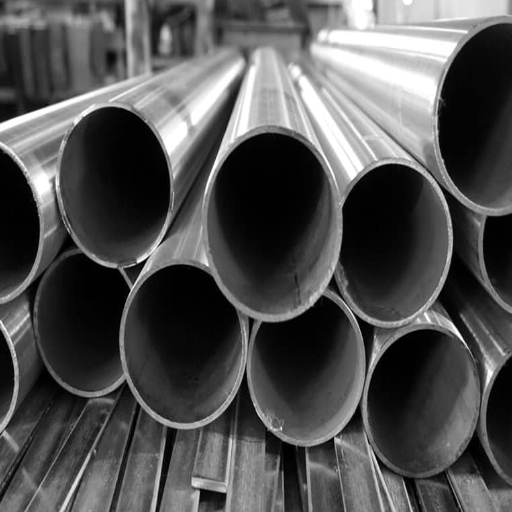
Industries That Prefer 18-8 Stainless Steel
18-8 stainless steel, an austenitic stainless steel standard grade which is very popular, is one of the most ideal materials across several industries, especially because of its great strength, longevity, and amazing physical qualities. One of the most demanding sectors that uses 18-8 stainless steel is the food and beverage manufacturing industry. This is mainly because in conformity with the strict food standards, it is usually employed for the production of food machines, storage vessels, and kitchenware, as it is resistant to erosive attack from acidic and salt solutions and easy to wash.
Another sector that greatly depends on 18-8 stainless steel is the medical and pharmaceutical industry. This is due to its excellent medical instruments and implants, which can be manufactured from such steel as 18-8 that would not rust or cause any irritations to the patient. Also, the materials above are relieved from sterilization substances so that they can be washed aloud several times a day with regular detergents along with other activities.
In the automotive and transportation industries, 18-8 stainless steel has become a critical component in the manufacture of equipment for use in the form of exhaust systems and body panels. In the application of civil engineering and architecture as well, 18-8 stainless steel acts as a major structural material of 18-8 stainless steel with outstanding resistance to weather conditions and pollutants in sleeves, hats, and other designs outside.
Finally, in the oil and gas or chemical plants, considerable use of 18-8 stainless steel is made in the construction of storage tanks, pipe work, and heat transfer equipment because it can resist both high temperature and high acid contents. These industries also appreciate the fact that the alloy’s efficient function in structurally damaging environments. In selecting technology, 18-8 stainless steel’s remarkable qualities include it being able to accommodate a broad application spectrum irrespective of the toughness or competition from cheaper steel.
Industries That Prefer 316 Stainless Steel
Stainless steel 316 is widely used in a variety of industries where superior strength, corrosion resistance and general capacity to withstand environmental factors are required. The marine sector places high demands on stainless steel 316 due to its ability to resist the corrosion effects of salt water, thereby eliminating pitting stress corrosion cracks. More so, the chemical industry appreciates the usefulness of the grade in the construction of chemical reactors and linings, as 316 offers resistance to harsh environmental chemicals and high temperatures.
In the food sector, 316 is best suited for use in the food sector as this grade is known to be non-reactive and ensures proper sanitation standards. Here, it is important for inclusion in equipment like food processing machinery, storage tanks, and pipeline components. Moreover, the Pharmaceutical and Medical companies need solid structures such as surgical instruments, implants, and processing installations out of this type of alloy as it is compatible with the immune system of a test object and resistant to sterilization substances.
Also, the application of 316 stainless steel is widespread in the construction sector, including physically stressing members, as such members are subjected to environmental influences. This is why the stainless steel 316 has become irreplaceable in these tough structural applications since it possesses an excellent balance of mechanical and anticorrosion properties.
Fabrication and Ease of Use
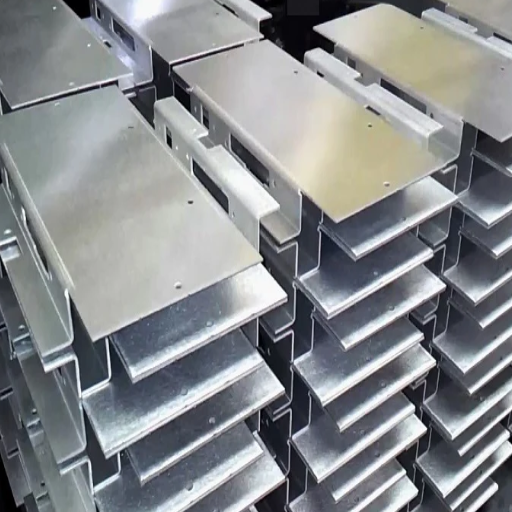
Welding and Machining 18-8 Stainless Steel
The term “18-8 stainless steel” includes the most commonly used grades, such as 304 and 316 stainless steel, characterized by their excellent characteristics of affordable welding and shaping features. Hence, it is one of the preferred materials for the manufacturing industry. Due to the elevated amounts of chromium and nickel in its composition, it maintains excellent properties even at high temperatures, which is why it has reduced capacity for stress cracking and deformation in the welded areas.
- Consideration for Welding: When performing welding on a grade 18-8 stainless steel, it is necessary to control the temperatures very well to inhibit carbon precipitation and, as a result, intergranular corrosion. Low carbon deviations, such as 304L or 316L, are more beneficial when high temperature zones are taken into account. Omission by and large of, or use of unsuitable fillers, especially productivity increases in the arc weld zone, falls short, is not too far from the case. It is also beneficial to the shielding gases such as Argon or its mixtures with Helium, as these gases have positive effects in the stabilization of the arc during the welding process and lessening the oxidation of the part.
- Characteristics relating to Machining: Owing to the material’s work-softening property in addition to the property of work-hardening at a certain point, working with 18-8 stainless steel requires one to be careful and certain regarding the choice of tools and machine settings. Carbide tools and the practice of keeping the cutting edge sharp would be streamlined to evade the friction that would easily wear the tools out. The operators should adjust the rotation and feed rate, thereby managing/reducing the heat generation, while the hot working mediums help in decreasing the heat levels and further improve the workpiece finish. Correct clamping is very important for parts precision reassurance and absorption of vibrations during the process.
If the above-discussed practices are followed, then it is possible to state that 18-8 stainless steel is a real universal solution for the automotive and medical equipment sectors since it meets the high needs of these customers.
Welding and Machining 316 Stainless Steel
Stainless steel grade 316 is known for being a superiorly corrosion-resistant austenitic alloy, especially in chloride environments, due to the presence of molybdenum. It helps that it is highly stable in such conditions, reason enough why this is the most specified stainless steel for marine, chemical, and pharmaceutical applications. Nonetheless, conventional welding and machining of 316 stainless steel come with their fair share of limitations that are handled carefully one by one.
- Welding 316 Stainless Steel: Correctly developing a weld between two pieces of 316 stainless steel requires controlling lots of variables, including choosing the most appropriate filler material, such as AWS ER316L or E316L electrodes, to prevent hot cracking in the welds. Low heat input and keeping the intermediate temperatures within limits, maintained normally at or below 150°F, are required to feed prevention of carbide and sensitization. The argon shield or use of argon-helium mixtures in TIG or MIG welding helps in producing adequate protection of the weld pool from atmospheric contamination. It is recommended not to perform post-weld heat treatments. However, it can be done in some cases to relieve the accumulated stress in the structure.
- Machining 316 Stainless Steel: Machining 316 is quite an arduous task due to the very low value of thermal conductivity and high hardness of the work material. To cut 316, some characteristics such as hard, sharp tools, carbide cutting edges, and clean grooving equipment, which can reduce the material removal process, are required. The cutting regions are run at minimum cutting speeds whilst ensuring proper feed rates such that excessive tool wear does not occur. Sufficient workpiece cooling is possible by utilizing high-pressure coolant, which also helps in avoiding galling and surface texture problems. The relative stiffness of the workpiece also significantly influences the machinability of the piece, as this affects the quality attainable and the repeatability found as a result of damping of the vibrations.
Such operations as welding and machining involve the use of the equipment, and the mastery of design practices is expected so as to ensure the optimal exploitation of the used equipment, the realized durability, and the life expectancy of the fabricated products in general. 316 type of steel is used in the most arduous scenarios without compromise, and it is possible.
Choosing the Right Grade for Fabrication Needs
Picking plates with the correct stainless steel grades for the fabrication jobs comes with such evaluation as the surrounding environment in which it is to be used, the needed mechanical properties, and the cost. For example, the 316 stainless steel will exhibit resistance against chemicals that corrode metals because of the molybdenum. This particular grade of stainless steel is preferable if it is used under very low or high temperature protection, as materials such as 304 can be applied. In most cases, high specification grades of steel are superior to other grades of steel. Such grades include 316 L, in which the carbon content is lower than 316, for these grades usually require welding of the steel.
It is also important to identify the conditions in which the material is used, including temperature range, the effect of different chemicals, as well as the probability of some mechanical loading on the material. Alloy such as 310 are notable for their resistance to elevated temperatures. At the same time, there are stronger stainless steels commonly referred to as duplex stainless steels – 2205 with very high mechanical and corrosion resistance, especially in aggressive environments. Such considerations are broadly in ensuring that a given grade fits the chosen operating conditions.
By taking into account all the above-discussed factors and negotiations with material experts enhance performance sustainability and decrease expenses, the operators can be sure that the material grade will last perfectly well in the condition it is going to be used in.
References
-
Studies Related to Microbially Induced Corrosion of Stainless Steel 304 and 316 – This study discusses the corrosion resistance of 18-8 stainless steel (Grade 304) and 316 in various environments.
-
The influence of heat treatment on structure, mechanical properties, and corrosion resistance of steel X10CrNi18-8 – A detailed analysis of the corrosion behavior and mechanical properties of 18 8 stainless steel.
-
The effect of the cold rolling on the structure and mechanical properties in austenitic stainless steel type 18-8 – This paper explores the structural and mechanical changes in 18-8 stainless steel due to cold rolling.
Frequently Asked Questions (FAQ)
Q: What is the difference between 18-8 stainless and 316?
A: The main difference between 18-8 stainless and 316 lies in their composition. 18-8 stainless steel typically contains 18% chromium and 8% nickel, while 316 stainless steel includes these elements along with molybdenum, which enhances its corrosion resistance properties, particularly in marine applications.
Q: How does 304 compare to 316 stainless steel?
A: When comparing 304 vs 316 stainless steel, the key difference is the presence of molybdenum in 316, which provides superior corrosion resistance, especially in chloride environments. This makes 316 a better choice for specific applications, such as those exposed to seawater.
Q: What are the yield strength differences between 18-8 and 316?
A: The yield strength of 316 stainless steel is generally higher than that of 18-8 stainless steel, making it more suitable for structural applications where strength is critical. This is particularly important in the context of fasteners and heavy-duty components.
Q: Are 18-8 stainless steel fasteners suitable for marine applications?
A: While 18-8 stainless steel fasteners can be used in marine applications, they do not provide the same level of corrosion resistance as 316 stainless steel. For environments with high salt exposure, 316 is recommended due to its superior corrosion resistance properties.
Q: What is the difference between 304 and 316 stainless steel grades?
A: The difference between 304 and 316 stainless steel grades primarily revolves around the addition of molybdenum in 316, which enhances its corrosion resistance, particularly in acidic or chloride-rich environments.
Q: Is 316 stainless steel more expensive than 304 stainless steel?
A: Yes, 316 stainless steel is generally more expensive than 304 stainless steel due to the inclusion of molybdenum and the higher production costs associated with its superior corrosion resistance properties.
Q: How does 18-10 stainless steel compare to 18-8?
A: The main difference between 18-8 and 18-10 stainless steel is the nickel content. 18-10 stainless steel contains 10% nickel, offering improved corrosion resistance and greater overall durability compared to 18-8.
Q: What are the common applications for 18-8 and 316 stainless steel?
A: 18-8 stainless steel is commonly used in household items, kitchen appliances, and general-purpose applications. In contrast, 316 stainless steel is preferred for marine applications, chemical processing, and environments where high corrosion resistance is critical.
Q: What are the properties of an austenitic stainless steel alloy?
A: Austenitic stainless steel alloys, like 18-8 and 316, are characterized by their non-magnetic properties, excellent formability, and corrosion resistance. They are commonly used in a variety of industries due to their versatility and strength.

